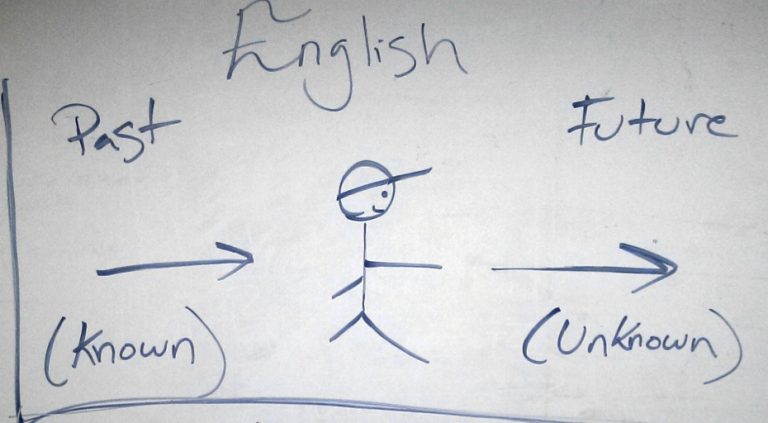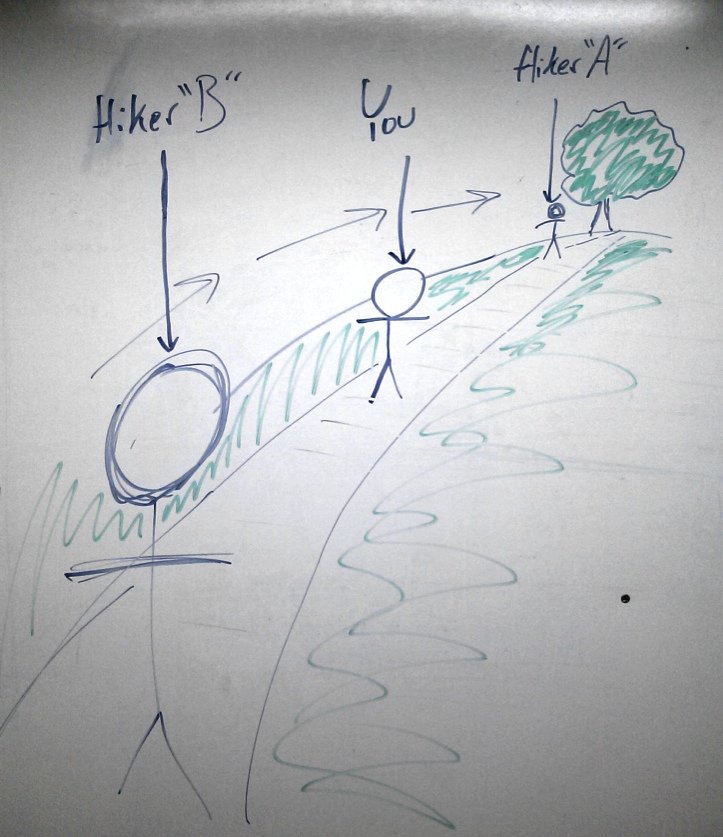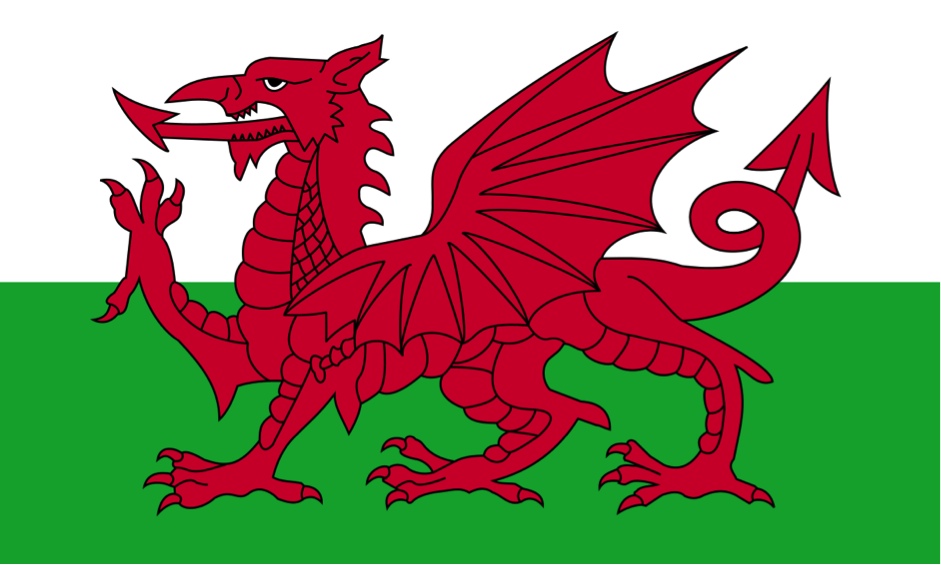Languages, just like people, can die. It happens when a language becomes forgotten or destroyed, or when a language’s last living speaker dies. The sad thing, though, is that the death of a language is normally an extraordinarily un-remarkable event.
That’s because no one is left to care. No one even knows to care. There is no funeral, no memorial, no speeches about a life well lived. Just oblivion.
It so frequently happens this way because only a small percentage of human languages ever get written down. Most of the languages that go extinct existed entirely as spoken languages without any kind of codification. They exist without books, magazines, dictionaries, lexicons, grammars, or any other linguistic artifacts, and when they disappear they leave not a single trace that they ever existed.
And when they’re gone, it’s really a tragedy for everybody. What we know about language, human history, human conceptualization, and patterns of thought is largely constructed by comparing different cultures, languages, and language groups.
Let me give you an example. Assuming you speak a European language as your mother tongue, I can tell you that you imagine the future as being ahead of you and the past as being behind you. I know that because learning the grammar of a European language forced you to think that way. Here are three sentences that you’ll readily understand:
1. “Let’s think ahead to the year 2025.”
2. “Technology is always moving forward.”
3. “Imagine if you could travel back in time.”
We normally use words like “forward” and “back” to talk about space. As in, “Please step forward” or “Back off, dude, you’re creeping out my lady friend here.”
We do that because we typically imagine ourselves at the center of our own universe—our grammars make us do it that way. When somebody says, “step forward,” you walk forward relative to yourself (that is, relative to your body which has a front and a back). When you tell some fool to “back off,” it’s possible that you’re putting yourself in his shoes and imagining his front and back and expecting that he’ll understand your transpositive sensibility and move in the appropriate direction relative to himself. Personally, I think it’s more likely that when you say, “back off” what you really mean is “get away from me.” We’re a pretty egocentric lot, when you think about it.
Here’s another thing. We’ve all become so accustomed to being at the center of our own private universes (in terms of space) that we extend our understanding of space to our understanding of time. For instance, if I tell you that I’ll meet you at the café BEFORE 4:00pm, you’re readily able to understand that the spatial preposition “before”—which normally means “in front of” also applies to time—meaning, “I’ll meet you at the café IN FRONT OF 4:00pm.”
So you either imagine yourself as a kind of arrow moving through time as in, “I’ll arrive in space at the café before I arrive in time at the ‘location’ of 4:00.” Alternatively, you can imagine the future as coming towards you.
Take this common expression, for example. “The heat of summer is rapidly approaching.” Grammatically, you’re making the heat of summer into a metaphorical object that is hurtling its way through space and time towards you like a train, a tidal wave, or a baseball.
No matter what, you’re always at the center.
And, you imagine the future as being “ahead” of you, and the past “behind” you.
That might be surprising to learn, or it might make a good deal of sense to you. In either case, that’s how you think because the grammar of all European languages make you think that way. Other languages, some of which have died, construe time quite differently.
To get a sense of how different things can be, have a look at this awesome picture I drew for you on my whiteboard. It shows how Eurocentric grammars like that of English construe the future as ahead and unknown and the past as behind and known. Meanwhile, Aymaran does almost the exact reverse.
I’ll grant you that imaging the future as being behind you is a pretty strange idea, but if you think like an Aymaran, who lives in the jungles and mountains of South America, it’s really not at all strange. They don’t talk about the world relative to themselves, they talk about the world relative to what’s known and not-known.
If you look at the picture below, you can imagine how an English construal marks “Hiker A” as being furthest into the future because she is closest to the destination—in this case, the tree at the end of the trail. The middle hiker—YOU—are considered to be temporally “behind” Hiker A because “the future” is when you’ll reach the tree. Meanwhile, Hiker B is even further in the past because he’ll reach the tree in a future even later than when you arrive there. Alternatively, for the Aymara, Hiker A is “furthest along” and thought of as being further into the past. This is because the Aymara associate the past with the known and the future with the unknown. Hiker A has reached the destination and therefore knows the most about it. She is therefore further into the known, and thus further into the past.
Alternatively, Hiker B knows the least about the destination, and is therefore further in the future—even though he’s behind YOU.
For speakers of English, this is a pretty exotic way of thinking. For the Aymara it’s everyday life.
See, people make their language work for them in the ways they need it to—irrespective of any so-called “rules of grammar”. Rollerbladers do that too. I wrote about this kind of thing a few years ago in an article about Rollerblading’s use of farside and topside back in the 90s. You can read about that here if you’re unfamiliar.
The TL;DR of that article goes like this: For a long time, linguists believed English prepositions were could never encode something called geon shape, but in the ad hoc language of Rollerblading, it was no problem: bladers used Farside to encode for round rails, and they used Topside to encode for square stuff like ledges or square rails. Thus, if your homie told you he did a farside soul on a rail that you’ve never seen, you would get (for free) the additional information that the rail he grinded was round. If he had said that he had done a topside soul—you would be able to assume that the rail was square.
It is a very interesting phenomenon—especially from a linguistic perspective, because a group of people with very little in the way of formal linguistics training (i.e., rollerbladers) created an ad hoc usage of two terms that absolutely defied conventional notions of preposition “behavior.”
Granted, that usage largely vanished from rollerblading parlance after the 90s, but for a time, it was rather normal. The point is, if it hadn’t been written down and talked about, the phenomenon could would have been lost to oblivion because it was kept only in the minds of some old school rollerbladers—many of whom aren’t even around anymore.
That’s why it’s important to learn what we can from obscure languages before they go away for good—even ad hoc or jargon “languages” like Rollerblading.
Now let me say a few more things about language death.
This may or may not come as a galloping to shock to you, but within the 193 countries on Earth there are about six or seven thousand languages currently in use. The overwhelming majority of the diversity encompassed by those languages, though, is only spoken by 4 % of the Earth’s human population. That means the other 96% of us speak one or two of the 83 or so mainstream languages, many of which were spread widely by means of imperialism, conquest, and domination (e.g. English, Spanish, French, Portuguese, to name a few).
Back in the so-called “age of exploration,” what you mainly had was a bunch of European dudes sailing all around the world, introducing foreign diseases, waging war, raping people, outlawing local languages and religions, and you know, generally whooping it up.
Great, right? I know. But that’s world history for you.
Now consider this: in 1999 there were 51 languages whose numbers had dwindled down to a single speaker. In that same year there were 500 languages with fewer than 100 speakers, 1,500 languages with fewer than 1,000 speakers, and 3,000 languages spoken by fewer than 10,000 speakers.
Here’s the real whopper: the same report that generated those figures above suggested that (in 1999) there were a staggering 5,000 languages with fewer than a hundred thousand native speakers.
Now, 100,000 people may sound like an awful lot. But let me put that number in perspective for you. English, which is one of the world’s most commonly spoken languages, has about 380 million native speakers. If you take into consideration the number of people who speak English as a second or foreign language, that figure jumps to nearly 2 billion. So the English language is obviously in no danger at all.
Languages spoken by fewer than 100,000 on the other hand, typically reside on the brink.
One hundred thousand people is about the number of folks who live in Flint, Michigan, say, or Centennial, Colorado or the whole country of Luxembourg. Any of those represents a small enough population to be wiped out by a natural disaster, a war, or some other kind of catastrophe.
For instance, in 2004 the Indian Ocean Earthquake and Tsunami killed an estimated 280,000 people. That’s nearly the same as the populations of Flint, Centennial, and Luxembourg COMBINED.
Here’s the other big thing. Typically, if the number of native speakers of a language is more than 1,000,000 and falls to a number below 100,000 (a 90% decline), its life expectancy drops to just two or three generations. If you spoke a language like that it wouldn’t be gone by the end of the year, or end of the decade, but by the time your grandkids are ready for high school (presuming that they were instead being brought up on one of the colonial or expansionist languages), they wouldn’t understand you anymore. In terms of a whole culture, a whole language, 3 generations is lightning fast.
Does any of this matter to rollerblading? Absolutely. Why? Because of numbers—what they stand for, and what they can tell us.
Please bear with me. No grammar exercise this time, I promise.
Okay. So…
I’ve been doing some research lately—and some speculation—and it’s absolutely clear that the number of rollerbladers worldwide has declined significantly in the past 15 years. Just how much our population has declined though, is where the research comes into play.
I believe that right now in developed countries like the U.S., France, Japan, Germany Australia, etc. there are around 25 rollerbladers per million people of the general population.
In developing countries (like Afghanistan, Ecuador, Cambodia, etc.) there is approximately 1 rollerblader per million people.
Based on global census date, those numbers would suggest that there are about 20,000 rollerbladers skating regularly right now.
In the 1990s, there may have been four, five, or even six times as many people doing “aggressive rollerblading.” Maybe more.
But if we take the modest median guess and say that, in the past, there were as many as five times more of us skating than there are now, that’d be about 100,000 people rollerblading.
If that were true, that would mean that participation in “aggressive” rollerblading has declined by about 80%. But I don’t necessarily think that means that, like the Aymara, our future is behind us. For many languages, 20,000 speakers is a very small number. 100,000 is still a relatively small number, but one which can be restored.
I want you to keep those numbers in your head for a minute while I transition to something that might seem a little bit strange to talk about in a rollerblading article: Wales.
You might not have ever heard of either Wales or the Welsh people (or language) before, but theirs is success story that cultures and language groups all around the world use as an idealized model for bringing a language back from the brink.
Let me tell you a bit about them.
The Welsh are an intrepid people who’ve been around since the Iron Age. They live in small coastal country about the size of New Jersey that’s just to the West of England. Over the centuries, they’ve resisted invasion from the Vikings, the Romans, and the English. They drink a lot because it rains there all the time, but they’ve given the world some pretty awesome shit. The Legend of King Arthur came from Wales, as did Thomas Jefferson, Tom Jones (the singer), and Daniel Webster (the guy who wrote Webster’s English dictionary).
Other Welsh people who you might be more familiar with include Sophie Dee (the porn actress), Anthony Hopkins (Silence of the Lambs), John Rhys-Davies (Sallah in the Indianna Jones movies and Gimli in LOTR), Catherine Zeta-Jones (from the Zorro movies) and George Everest (the first to summit all 29,029 feet of the eponymous Mt. Everest).
But it hasn’t always been smooth sailing and sexy women for the Welsh. Like I said before, they’ve resisted waves of invasion from some pretty formidably foes. Nothing like any of us has dealt with—perhaps with the exception being our friends in Eastern European countries who, themselves, have seen some real shit in the last 40 years. For the rest of us though, I’ll pose the following question: when was the last time you had to rip the throat out of a Viking invader who was raping your wife? When was the last time you faced a legion of Roman soldiers, or the English Crown? These are some tough ass motherfuckers we’re talking about here.
Resistance is in their blood. And resistance is also a national symbol of theirs in the form of the Red Dragon (the Ddraig Goch in Welsh). I think they also put the dragon on there because dragons are bad ass.
But even tough ass motherfuckers with bad ass flags still have a hard time keeping their language intact. In the mid 20th century, the number of people who spoke Welsh had fallen to an all time low. Just 36% of the country’s 2.5 million people could still speak the language. That was about 900,000 speakers. That’s way more people than speak Rollerblading, but in 1956 Welsh leaders were terrified their language would be lost forever by that century’s end because English had overtaken Welsh as the primary language in Wales.
See, even a comparatively high number like 900,000 speakers doesn’t keep a language safe. It has to do with how linguists measure the health of a language.
One of the ways linguists get a sense of the health of language is by comparing the number of old people (60+) who speak the language against the number of young people (say, under 20 years old) who speak the language. In mid 1950s Wales, the overwhelming majority of speakers were more than 60 years old. And when it’s only the old people speaking a language, it’s usually doomed. For the Welsh, the younger people were all learning English instead of Welsh, and if nothing was done, people would quit caring about it and the language would disappear altogether.
They way they brought Welsh back from the brink was by teaching it to the kids again. They made it cool again to speak Welsh and taught the kids about the cool parts of Welsh history that shape their Welsh identity—a common heritage with those guys back in the day who killed off thousands of Viking and Roman invaders.
It’s one thing to think your grandpa was cool because he bought you candy or bought you toys; it’s another thing to think he was a fucking gangster because he killed 45 Vikings with rocks and his bare hands.
Today, the number of Welsh language speakers is safely above 1 million, and, crucially, there are many more young people than old people speaking the language.
And that’s what rollerblading can learn from the Welsh. Our history and our language are just as important as anything else we do. Don’t get me wrong though, I still think it’s paramount that people continue to go out and skate, find new spots and invent new tricks and styles. Getting more young people involved will also be crucial if we want rollerblading to survive more than a couple more “generations.” But continuing to use our own “language” is a crucial part of maintaining our culture; it’s part of who we are and what we do.
What I really want to leave you with, though, is this question to ponder for my next article:
What else makes a rollerblader a rollerblader?
Thanks for your consideration,
– Frank Stoner
Your favorite pros’ favorite products. Support Be-Mag by buying at our very own

or one of the following affiliate partners:
Amazon – everything you need
B&H – cameras and more
eBay – Electronics, Cars, Fashion, Collectibles, Coupons and more








